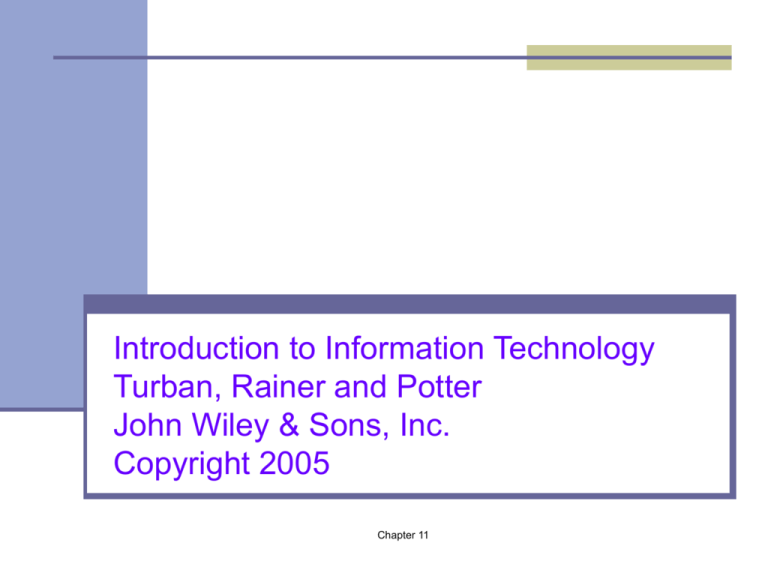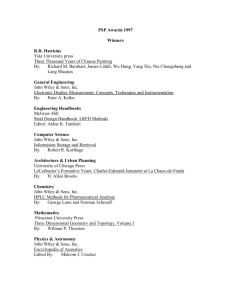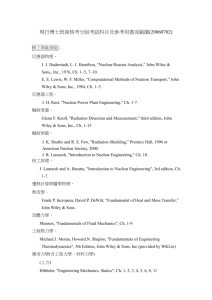
Introduction to Information Technology
Turban, Rainer and Potter
John Wiley & Sons, Inc.
Copyright 2005
Chapter 11
ACQUIRING AND
IMPLEMENTING SYSTEMS
Chapter 11
Acquiring IT Applications and
Infrastructure
Chapter 11
3
Chapter Outline
The landscape and framework of IT application
acquisition.
Planning for and justifying information system
applications.
Strategies for acquiring IT applications: available
options.
Outsourcing and application service providers.
Criteria for selecting an acquisition approach.
Vendor and software selection and other
implementation issues.
Connecting to databases and business partners.
“ Copyright 2005 John Wiley & Sons Inc.”
Chapter 11
4
Learning Objectives
Describe the progress of IT acquisition or development.
Describe the IT planning process.
Describe the IT justification process and methods.
List the major IT acquisition options and the criteria for options
selection.
Describe the use of criteria for selecting an acquisition
approach.
Describe the role of ASPs.
Describe the process of vendor and software selection.
Understand some major implementation issues .
Understand the issue of connecting IT applications to
databases, other applications, networks, and business partners.
“ Copyright 2005 John Wiley & Sons Inc.”
Chapter 11
5
11.1The Landscape and Framework
of IT Application Acquisition
We include in “acquisition” all approach to
obtaining systems: buying, leasing or
building.
“ Copyright 2005 John Wiley & Sons Inc.”
Chapter 11
6
The Acquisition Process
Step 1: planning for and justifying information
systems.
Step 2: IT architecture creation-A systems
analysis approach.
Step 3: select a development option and
acquire the application.
Step 4: installing, connecting, and more.
Step 5: operation and maintenance.
“ Copyright 2005 John Wiley & Sons Inc.”
Chapter 11
7
The progress of application acquisition
“ Copyright 2005 John Wiley & Sons Inc.”
Chapter 11
8
11.2 Planning for and Justifying
Information System Applications
First, It is necessary to explore the need for
each systems.
Second , it is necessary to justify it from a
cost- benefit point of view.
Application portfolio: The set of
recommended applications resulting from the
application development.
“ Copyright 2005 John Wiley & Sons Inc.”
Chapter 11
9
The IS Planning Process
“ Copyright 2005 John Wiley & Sons Inc.”
Chapter 11
10
The IT Strategic Plan
A set of long range goals that describe the IT
infrastructure and major IS initiatives needed
to achieve the goals of the organization.
The IT plan must meet three objectives::
It must be aligned with the organization’s
strategic plan
It must provide for an IT architecture
It must efficiently allocate IS development
resources among competing projects
“ Copyright 2005 John Wiley & Sons Inc.”
Chapter 11
11
Three Major Issues of IT Strategic
Planning
Efficiency
Effectiveness
Competitiveness
“ Copyright 2005 John Wiley & Sons Inc.”
Chapter 11
12
IT alignment with organizational
plans and IT strategy
The IT strategic plan must be aligned with overall
organizational planning, whenever relevant, so
that the IT unit and other organizational
personnel are working toword the same goals,
using their respective competencies.
“ Copyright 2005 John Wiley & Sons Inc.”
Chapter 11
13
The alignment among business and IT
strategies and IS operational plan
“ Copyright 2005 John Wiley & Sons Inc.”
Chapter 11
14
The IS Operational Plan
The IS operational plan is a clear set of projects that
will be executed by the IS department and by
functional area managers in support of the IT
strategic plan
Mission
IS environment
Objectives of the IS function
Constraints on the IS function
The application portfolio
Resource allocation and project management
“ Copyright 2005 John Wiley & Sons Inc.”
Chapter 11
15
Evaluating and justifying IT investment
Justifying IT investment includes three aspects:
assessment of costs,
assessment of benefits (values), and
comparison of the two.
“ Copyright 2005 John Wiley & Sons Inc.”
Chapter 11
16
IT investment categories
Investment in infrastructure and investment in
specific applications:
The IT infrastructure: Include the physical
facilities, components, services, and
management.
The IT applications: are computer programs
designed to support a specific task, a
business process or another application
program.
“ Copyright 2005 John Wiley & Sons Inc.”
Chapter 11
17
A Model for Investment Justification
“ Copyright 2005 John Wiley & Sons Inc.”
Chapter 11
18
Costing IT Investment
Fixed costs: are those costs that remain the
same regardless of change in the activity
level. For IT, fixed costs include infrastructure
cost of IT services, and IT management cost
Total cost of ownership (TCO): Formula for
calculating the cost of acquiring, operating
and controlling an IT system.
“ Copyright 2005 John Wiley & Sons Inc.”
Chapter 11
19
Evaluating the Benefits
Intangible benefits. Benefits from IT that may
be very desirable but difficult to place an
accurate monetary value on.
“ Copyright 2005 John Wiley & Sons Inc.”
Chapter 11
20
Conducting Cost-Benefit Analysis
Using NPV in cost-benefit Analysis. Using the NPV
method, analysts convert future values of benefits to
their present-value equivalent by discounting them at
the organization’s cost of funds.
Return on investment. It measure the effectiveness of
management in generating profits with its available
assets.
The business case approach. A business case is one
or more specific applications or projects. Its major
emphasis is the justification for a specific required
investment, but it also provides the bridge between
the initial plan and its execution.
“ Copyright 2005 John Wiley & Sons Inc.”
Chapter 11
21
Cost-Benefit Analysis Methods
Method
Description
Benchmarks
Focuses on objective measures of performance. Metric benchmarks provide
numeric measures of performance, best-practice benchmarks focus on how IS
activities are actually performed by successful organization.
Management by
maxim
Brings together corporate executives, business-unit managers, and IT executives
to identify IT infrastructure investments that correspond to organizational
strategies and objectives.
Real-option
valuation
Stems form the field of finance. Looks for projects that create additional
opportunities in the future, even if current costs exceed current benefits.
Balanced
scorecard method
Evaluates the overall health of organizations and projects, by looking at the
organization’s short- and long-term financial metrics, customers, internal business
processes and learning and growth (Kaplan and Norton, 1996).
Activity- based
costing approach
Applies principles of activity-based costing (ABC)( which allocates costs based on
each product’s use of company activities in making the product) to IT investment
analysis.
EIAC model
Methodology for implementing IT payoff initiatives, composed of 9 phases, divided
into four categories: exploration (E), involvement (I), analysis (A) and
communication (C).
“ Copyright 2005 John Wiley & Sons Inc.”
Chapter 11
22
11.3 Strategies for Acquiring IT
Applications: Available Options
Buy the applications (off-the-shelf approach)
Lease the applications
Develop the applications in–house
(insourcing)
End-user development
Other acquisition options
“ Copyright 2005 John Wiley & Sons Inc.”
Chapter 11
23
Advantages and Limitations of the
“Buy” Option
Advantages of the “Buy” option
Many different types of off-the-shelf software are available
Much time can saved by buying rather than building
The company is not the first and only user
the company can know what it is getting before it invests in the product
Purchased software may avoid the need to hire personnel specifically dedicated to a project.
Limitation of “ Buy” option
Software may not exactly meet the company’s need
Software may be difficult or impossible to modify, or it may require huge business process
change to implement.
The company will not have control over software improvement and new versions.
Purchased software can be difficult to integrate with existing systems
Vendors may drop a product or go out of business
“ Copyright 2005 John Wiley & Sons Inc.”
Chapter 11
24
Types of Leasing Vendors
to lease the application from an outsourcer
and install it on the company’s premise. The
vendor can help with the installation and
frequency will offer to also contract for the
operation and maintenance of the system.
Many conventional application are leased this
way.
using an application system provider (ASP).
“ Copyright 2005 John Wiley & Sons Inc.”
Chapter 11
25
Utility Computing
Unlimited computing power and storage
capacity that can be obtained on demand and
billed on a pay-per use basis.
“ Copyright 2005 John Wiley & Sons Inc.”
Chapter 11
26
Utility Computing
“ Copyright 2005 John Wiley & Sons Inc.”
Chapter 11
27
In-House Development Approach
Build from Scratch: used for applications for
which components are not available
Build from components. Companies with
experienced IT staff can use standard
components (e.g., secure Web server), some
software languages ( e.g., Java, Visual basic,
or Perl), and third-party subroutines to create
and maintain application on their own.
“ Copyright 2005 John Wiley & Sons Inc.”
Chapter 11
28
Building in-house Methodologies
System development life Cycle (SDLC)
Prototyping methodology
“ Copyright 2005 John Wiley & Sons Inc.”
Chapter 11
29
Other acquisition options
Join an e-marketplace or an E-Exchange
Join a third –party auction or reverse
auction
Engage in joint ventures
Join a public exchange or a consortium
Hybrid approach
“ Copyright 2005 John Wiley & Sons Inc.”
Chapter 11
30
11.4 Outsourcing and Application
Service Providers
Outsourcing: use of outside contractors or
external organizations to acquire IT services
Several type of vendors offer services for
creating and operating IT system including ecommerce applications:
Software houses
Outsourcers and others
Telecommunications companies
“ Copyright 2005 John Wiley & Sons Inc.”
Chapter 11
31
Application Service Providers (ASP)
An agent or vendor who assembles the
software needed by enterprises and
packages them with outsourced
development, operations, maintenance, and
other services.
“ Copyright 2005 John Wiley & Sons Inc.”
Chapter 11
32
Additional criteria for selecting an ASP
vendor
Database format and portability .
Application and data storage
Scope of service
Support services
integration
“ Copyright 2005 John Wiley & Sons Inc.”
Chapter 11
33
Criteria for determining which application
development approach to use
The functionalities of package
How to measure benefits
Information requirement
Personnel needed
User friendless
Forecasting and planning for
technological evolution
Hardware and software
resources
Scaling
Installation
Sizing
Maintenance services
Performance
Vendor quality and track record
Reliability
Estimated costs
Security
“ Copyright 2005 John Wiley & Sons Inc.”
Chapter 11
34
Advantage and disadvantage of various
system acquisition method
Traditional system development (SDLC)
force staff to systematically go through
every step in a structure process
Enforce quality by maintaining standards
Has lower probability of missing important
issues in collecting user requirements.
may produce excessive documentation
Prototyping
helps clarify user requirements
helps verify the feasibility of the design
promotes genuine user participation
Promotes close working relationship between
systems developers and users.
Work well for ill-defined problems
May produce part of the final system
may encourage inadequate problem analysis
“ Copyright 2005 John Wiley & Sons Inc.”
users may be unwilling or unable to study the
specifications they approve
takes too long to go from the original ideas to
a working system
User have trouble describing requirement for
a proposed system.
Not paractical with large number of users
User may not give up the prototype when the
system is complete.
may generate confusion about whether the
system is complete and maintainable
system may be built quickly, which may
result in lower quality
Chapter 11
35
Advantage and disadvantage of various
system acquisition method cont…
End user development
bypasses the IS department and avoids
delays
User controls the application and can change
it as needed
directly meets user requirement
increased user acceptance of new system
Frees up IT resources
May create lower-quality systems.
External acquisition (buy or lease)
Software can be tried out
Software has been used for similar problem
in other organizations
Reduces time spent for analysis, design and
programming
Has good documentation that will be
maintained
“ Copyright 2005 John Wiley & Sons Inc.”
may eventually require maintenance
assistance from IT department
documentation may be inadequate
poor quality control
System may not have adequate inferences to
existing systems
controlled by another company with its own
priorities and business considerations.
Package’s limitations may prevent desired
business processes
May be difficult to get needed enhancements.
lack of intimate knowledge about how the
software work and why it works that way
Chapter 11
36
11.6 Vendor and software selection and
other implementation issues
Martin et al. (2000) identified six step in
selecting software vendor and an application
package.
Step 1 : Identify potential vendors
Step 2: determine the evaluation criteria
Step 3: evaluate vendors and packages
Step 4: choose the vendor and package
Step 5: negotiate a contract.
“ Copyright 2005 John Wiley & Sons Inc.”
Chapter 11
37
Criteria for selecting a software
application package
Cost and financial terms
Upgrade policy and cost
vendor’ reputation and availability for help
System flexibility
ease of Internet interface
Availability and quantity of documentation
Necessary hardware and networking resources
Required training (check if provide be vendor)
Security
Learning (speed of) for developers and users
Graphical presentation
Data handling
System- requirement hardware
“ Copyright 2005 John Wiley & Sons Inc.”
Chapter 11
38
Other Implementation Issues
In-house or outsource Web site
Consider an ASP
Do a detailed IT architecture study
Security and ethics
Evaluate the alternatives to in-house systems
development
“ Copyright 2005 John Wiley & Sons Inc.”
Chapter 11
39
11.7 Connecting to Databases and
Business Partners
EC application must be connected to internal
information systems, infrastructure, ERP, and
so on.
They also must be connected and are
referred to as “integration.”
“ Copyright 2005 John Wiley & Sons Inc.”
Chapter 11
40
Connecting to database
“ Copyright 2005 John Wiley & Sons Inc.”
Chapter 11
41
All rights reserved.
Reproduction or translation of
this work beyond that permitted in section 117 of the
United States
Copyright Act without express
permission
of the copyright owner is unlawful.
Request for information should be addressed to the
permission department, John Wiley & Sons, Inc. The
purchaser may make back-up copies for his/her own
use only and not for distribution or resale. The
publisher assumes no responsibility for error,
omissions, or damages caused by the use of these
programs or from the use of the information herein.
“ Copyright 2005 John Wiley & Sons Inc.”
Chapter 11
42








